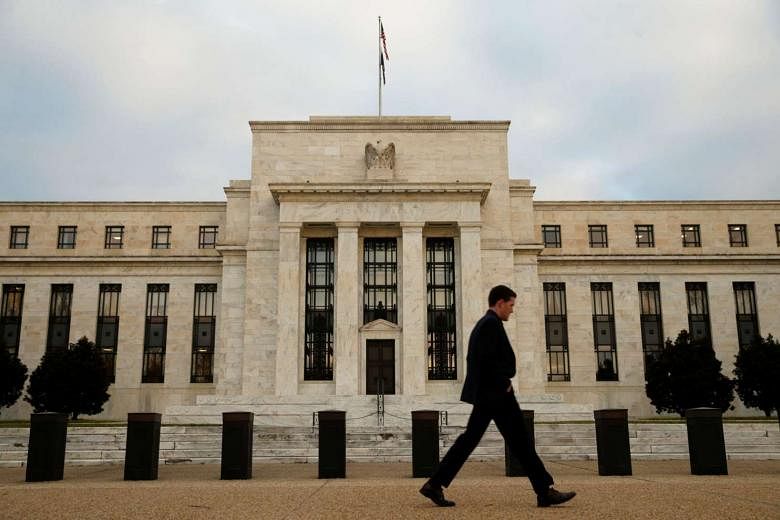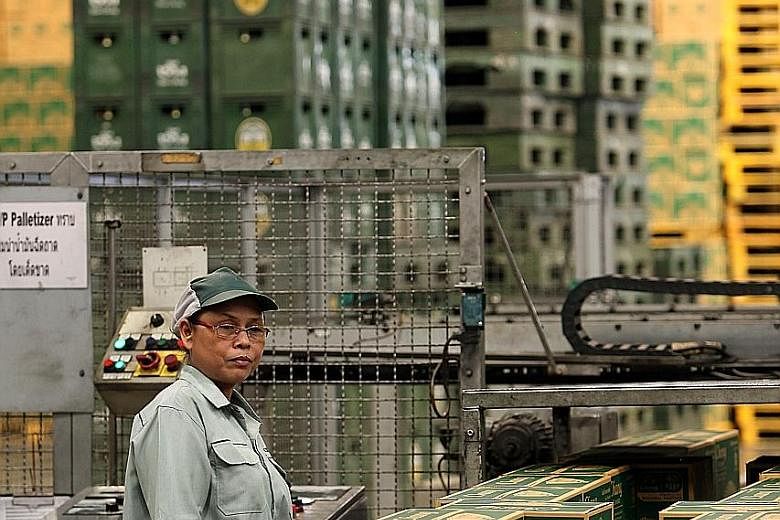Investors here appear to be sticking by the age-old "sell in May and go away" adage this month, going by a spike in short-term volatility on the Straits Times Index (STI).
An SGX My Gateway report last week noted that short-term volatility in the STI continued to rise this month, compared with most other markets in Asia, which saw short-term volatility ease.
As at last Friday, the benchmark index's 10-day historical volatility stood at 14.5 per cent, well up on the 12 per cent as at the end of April.
In contrast, the 10-day historical volatility of the MSCI AC Asia Index slipped to 14.2 per cent from 14.3 per cent as at April 29. Short-term volatility in Japan's Nikkei 225 index, for instance, fell markedly to 12.4 per cent from 39.5 per cent.
The "sell in May and go away" strategy is largely based on seasonal trading patterns. A trader sells his shares in May, in line with lower trading volumes during the northern summer months, and returns to the market in November, when investment flows pick up again.
In addition to the higher level of short-term volatility, the STI closed at 2,802.51 points last Friday, down 1.27 per cent for the month, compared with the 0.71 per cent gain in April. But this is still considerably better than the 2.5 per cent fall in May last year, and the 7.4 per cent dive in May 2012.
"If you look back, there were monthly losses during May in four of the last five years - it does seem that May is a bad month for stocks," IG market strategist Bernard Aw told The Straits Times.
The latest bout of selling was likely compounded by a mellow corporate earnings season amid a weak economic outlook. The worst-performing STI stocks for the month as at May 27 included Jardine Cycle & Carriage, which had slumped 12.9 per cent following a fall in its first-quarter underlying profits on the back of lower contributions from subsidiary Astra International.
Wilmar International lost 10 per cent after the company flagged challenging operating conditions in the second quarter and volatile sugar prices, while Genting Singapore slid 9.8 per cent amid growing competition and rising bad debt.
Thai Beverage Public Company, on the other hand, was the biggest winner, outperforming the market with a 20.1 per cent growth, thanks to strong first-quarter earnings and a favourable revenue outlook.
Mr Aw said it is still too early to tell if the age-old trading strategy is working, especially with a slew of "risk events" lined up for the rest of the year, which could dramatically affect stock returns.
"Global risk markets could face quite challenging months ahead, as the month of June will bring a reckoning of sorts, with central bank meetings from the US Fed, European Central Bank and Bank of Japan, Brexit vote and an Opec (Organisation of the Petroleum Exporting Countries) meeting - all expected to pose huge risks for financial markets," he said, noting the Brexit vote and the US elections will also come into play. "It doesn't help that the recent oil rally is showing signs of fatigue as well, and its inability to stay above US$50 a barrel is causing concerns over whether the uptrend is sustainable."
Mr Aw added that the risk events work both ways, which means investors could miss out on the upside if they had chosen to offload their shares in May and go away.
The biggest risk, said Mr Tareck Horchani, director of global sales trading at Saxo Capital Markets, will likely come from the US, specifically the upcoming interest rate hikes.
"If they hike only once, the market will continue to buy equities to get better yields. Even if there are up to two hikes, there is a good chance to see good support in the equity markets," he noted, adding that in Asia, the focus continues to be on China and credit issues.
Still, Mr Horchani believes the "sell in May and go away" strategy could yield more positive results later in the year, when US interest rates are indeed heading upwards, with equity markets seeing more outflows.
Mr Yeo Kee Yan, Singapore market strategist at DBS Group Research, said investors should keep an eye out for firms with earnings visibility and a stable outlook.
"(These firms) should also offer a comfortable dividend yield or have a strong cash position," said Mr Yeo, citing names such as Sheng Siong Group, ARA Asset Management and Frasers Centrepoint Trust.
A DBS Group Research report last week noted that Sheng Siong continues to meet growth expectations and is "one of the most well-run grocery retailers in Asean, leading regional peers in profitability, cash flow generation and working capital management".
It maintains a "buy" call on the stock with a target price of $1.04, which implies a 16 per cent upside.





